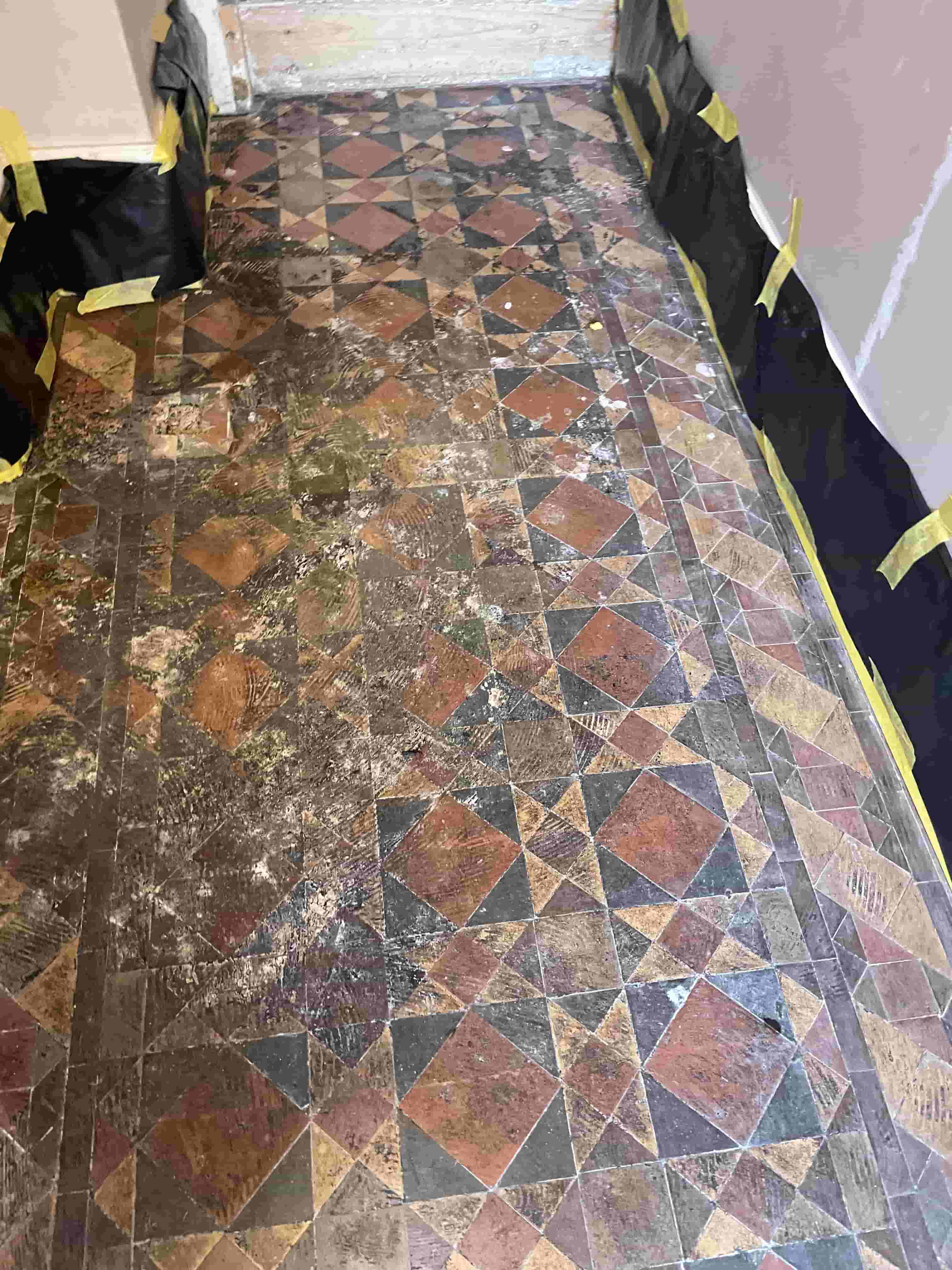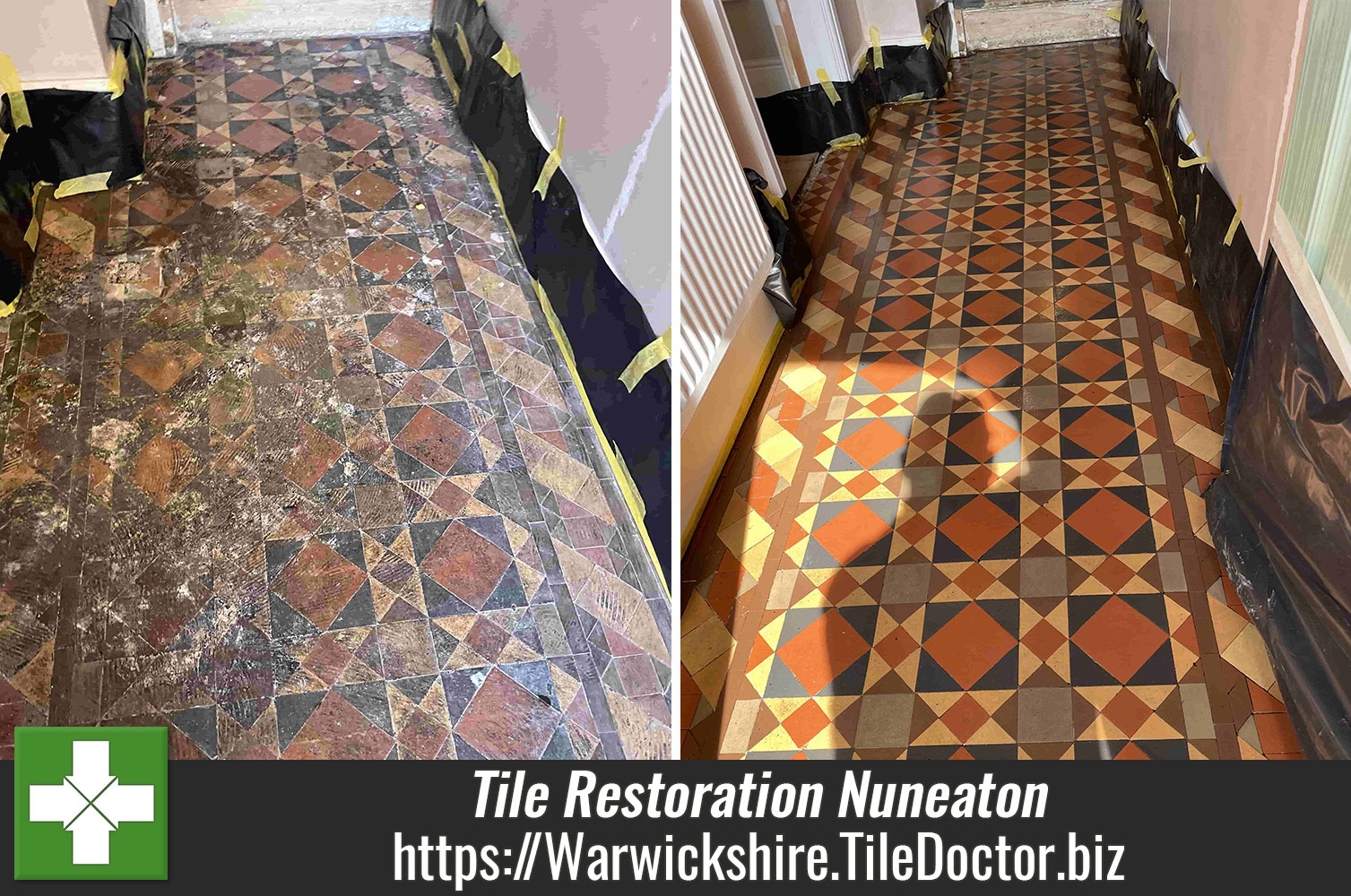Removing Tar from Victorian Tiles with a Cocktail of Tile Doctor Products in Nuneaton
The photos below are of a Victorian Tiled Hallway at a property in Nuneaton, the owner of the property had decided the carpet was past its best and having removed it was pleased to find an original Victorian tiled floor underneath.
 |  |
However, the tiles were thoroughly stained with Tar of all things and so we were called in to do restore it. Tar and Bitumen are waterproof and were traditionally used to prevent damp from coming up through the floor. Old floors like this one were laid before Damp Proof Courses were invented. The trouble with this approach however is it pushes the damp problem elsewhere such as the walls which can lead to rising damp. The best solution is to let the floor breath so the moisture can evaporate at the surface of the tile.
Another problem with this floor were several loose and broken tiles which would need replacing however the tar staining made it difficult to order replacements as I couldn’t be sure about the colours and how many to order.
Cleaning and Repairing a Dirty and Damaged Victorian Tiled Floor
Deep cleaning the Victorian tiles was very hard work and had to try different combinations of solvents to remove the tar and deep clean the floor. I started with Tile Doctor Remove and Go combined with Nanotech HBU and leaving it to soak in for fifteen minutes before working it in with a coarse diamond encrusted burnishing pad. I had to use several burnishing pads of different grits to get the Tar off the tiles and they were clogged with Tar once completed. I had to work in stages and all the soil generated was extracted with a wet vacuum.
To keep the moisture levels of the floor low I followed up with an application of Tile Doctor Oxy-Gel which being a Gel cleaner its very east to manage and only needs a small amount of water to rinse it off with afterwards. The gel was worked into the floor with another burnishing pad and the soiling extracted afterwards with a wet vacuum as before.
The next consideration was a build-up of efflorescence in the pores of the tile, this happens where alkaline salts held in moisture under the floor get left on the surface as unsightly white deposits when it evaporates at the surface. Basic chemistry will tell you that you can counter an alkaline with an acid and to do this I gave the whole floor an acid wash using another Tile Doctor product called Acid Gel which again being a Gel keeps the use of water to a minimum.
By the end of the first day the old tiles were clean and I was able to work out how many tiles I would need and of course what colour I would need. The restoration project was therefore put on hold until I can source the replacement tiles and install them.
Sealing a Victorian Tiled Floor
With the cracked and broken tiles replaced I was able to return and apply a fresh sealer that would protect the floor from staining and merge the appearance of the old and new tiles together and make it easier for the property owner to keep the tiles clean going forward.
I knew from the history of this floor I would need a fully breathable sealer that could cope with potential damp that could still be trapped under the floor. The carpet has only been removed a few ago so I applied Tile Doctor X-Tra seal which can be used internally and externally. It leaves a matt finish but was the ideal product for a floor like this one.
 |  |
For aftercare I advised the owner to use Tile Doctor Neutral Clean, it’s an effective day to day tile cleaning product which is gentle enough that it can be used regularly on a sealed tile floor. You do have to be careful with supermarket cleaners as many contain bleach which can strip the sealer off a tiled floor leaving it vulnerable.
Source: Tile Stain Cleaning and Restoration Service in Warwickshire
